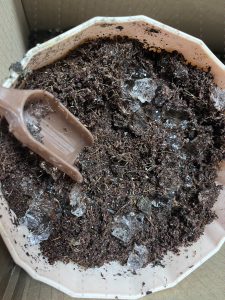While it’s convenient to buy products online, especially super absorbent polymers for agriculture, it’s crucial to understand the key differences between various options available in the market.
The capability of these polymers to enhance plant growth is impressive. However, an important consideration arises: Is it safe to use these gel-like substances for all plants and crops without causing any pollution?
There are primarily two types of polymers known for their water absorption and gel-forming properties: sodium polyacrylate and potassium polyacrylate. Sodium polyacrylate is commonly used, while potassium polyacrylate is considered a more specialized polymer designed for the optimal growth of common plants.

Here are the significant differences to note:
- Chemical Composition:
- Sodium polyacrylate contains sodium, which can potentially lead to soil hardening with frequent use.
- Potassium polyacrylate, on the other hand, contains potassium, which acts as a fertilizer for plants, enhancing their efficiency.
- Water Gel Characteristics:
- The water gel formed by sodium polyacrylate is softer and may sometimes contribute to root rot issues.
- In contrast, the water gel formed by potassium polyacrylate is firmer and does not become sticky.
- Application:
- Sodium polyacrylate is commonly found in disposable products such as paper diapers and sanitary napkins.
- Potassium polyacrylate, with a longer period of effectiveness, can last more than three years in the soil, making it ideal for agricultural applications.
- Price:
- Potassium polyacrylate is generally priced about twice as much as sodium polyacrylate. It’s essential to consider these cost differences before making a purchase decision.
In conclusion, understanding these key differences between sodium polyacrylate and potassium polyacrylate is crucial for selecting the right super absorbent polymer for your agricultural needs.

